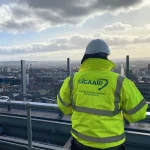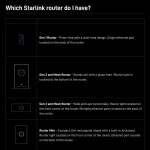Spectrum Internet Deploy Own Fibre Broadband to 700 Homes in Rural Wales
Cardiff-based ISP Spectrum Internet has announced that the rollout of its own Fibre-to-the-Cabinet (FTTC) based superfast broadband (30Mbps+) network in South Wales has now passed more than 700 homes around the Gower (Swansea) telephone exchange area and for two villages in Monmouthshire.
The provider typically focuses on areas that suffer from sub-2Mbps broadband download speeds and appears to be at least partially funding the development of its own largely independent network by making good use of the Welsh Government’s £4m Broadband Support Scheme (BSS).
Advertisement
The BSS essentially provides individual cash grants worth up to £1,000 to help upgrade those living in the most digitally isolated parts of Wales (UK) and give them access to faster internet services (e.g. such as by covering the installation cost of a new network or connection). It was recently extended to run until the end of this summer (here).
Giles Phelps, Managing director of Spectrum Internet, said:
“There is high demand and take up for better broadband in rural areas although the number of households may be lower. We are small enough to be more flexible in these areas and like working with communities that don’t want to wait any longer to get a decent broadband service.”
Phelps also confirmed that the ISP had similarly upgraded several rural telephone exchanges to help 3,000 properties in the region benefit from faster standard broadband services (up to 20Mbps ADSL2+).
Standard broadband packages start from as little as £15 a month for residential customers ‘on net’ (business options are also available), while their superfast packages that advertise speeds of 20-30Mbps (note: technically the FTTC lines have recorded peaks of up to 80Mbps) begin at £30 a month for a 50GB usage allowance (plus £50 installation).
The details are a little sparse but Spectrum Internet have confirmed to ISPreview.co.uk that they’re using a Sub Loop Unbundling (SLU) solution to build their own street cabinets separate from BT’s infrastructure, which is a very tricky thing to do and only a few rural ISPs have attempted it.
Advertisement
It should be noted that the picture at the top of this article is actually from one of Rutland Telecom’s Subloop Unbundled (SLU) cabinets. At the time of writing we were unable to find an example image for spectrum internet, which might look slightly different.
UPDATE 10:02am
Thanks to Spectrum Internet for providing a picture from one of their actual FTTC cabinets (shown on the right side next to BT’s old cab).
Mark is a professional technology writer, IT consultant and computer engineer from Dorset (England), he also founded ISPreview in 1999 and enjoys analysing the latest telecoms and broadband developments. Find me on X (Twitter), Mastodon, Facebook, BlueSky, Threads.net and Linkedin.
« UPDATE8 Gov Pledge 95% of UK to Get Fixed Superfast Broadband by 2017

















































Comments are closed